#ancient roman bath
Text

A Favorite Custom by Lawrence Alma-Tadema (1909)
#lawrence alma tadema#art#paintings#fine art#1900s#1900s art#academicism#academism#academic art#painting#british art#dutch artist#ancient rome#roman baths#thermae#classic art
5K notes
·
View notes
Text

The ancient ruins of the Baths of Caracalla.
Rome
Dec. 2019
#ruins#baths of caracalla#roman ruins#roman architecture#roman archaeology#architettura#architecture#archaeology#original photography#italia#italy#photography#travel#rome#roma#roman empire#ancient rome#ancient architecture#photographers on tumblr#historical architecture#lensblr#wanderingjana
478 notes
·
View notes
Text

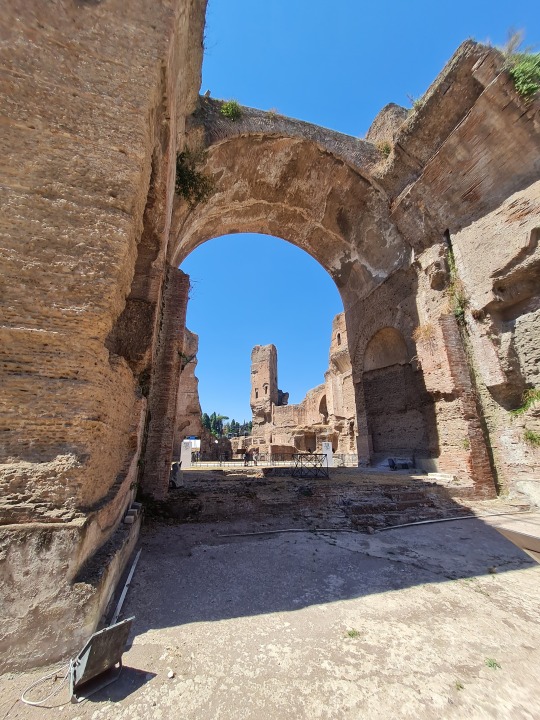

The Baths of Caracalla in Rome, Italy
The Baths were unprecedented in size: 1600 Romans could bathe at the same time. Apart from the bathing facilities, there were two libraries and there were shops, offices, gardens and even an area for sport. It simply didn't fit inside of Rome, and that is why it was built just outside of it, by the Appian Way (Via Appia).
#baths of caracalla#ancient rome#ancient history#ancientmonuments#roman empire#roman emperor#rome#italy#italia#roman architecture#architecture#architettura#ruins#history#culture#archaeology#roman archaeology#roman history#mosaic#roman mosaic#travel#traveling#travel photography#photography#wanderlust#vacation#travel tips#travel destinations#explore#.5k
995 notes
·
View notes
Text

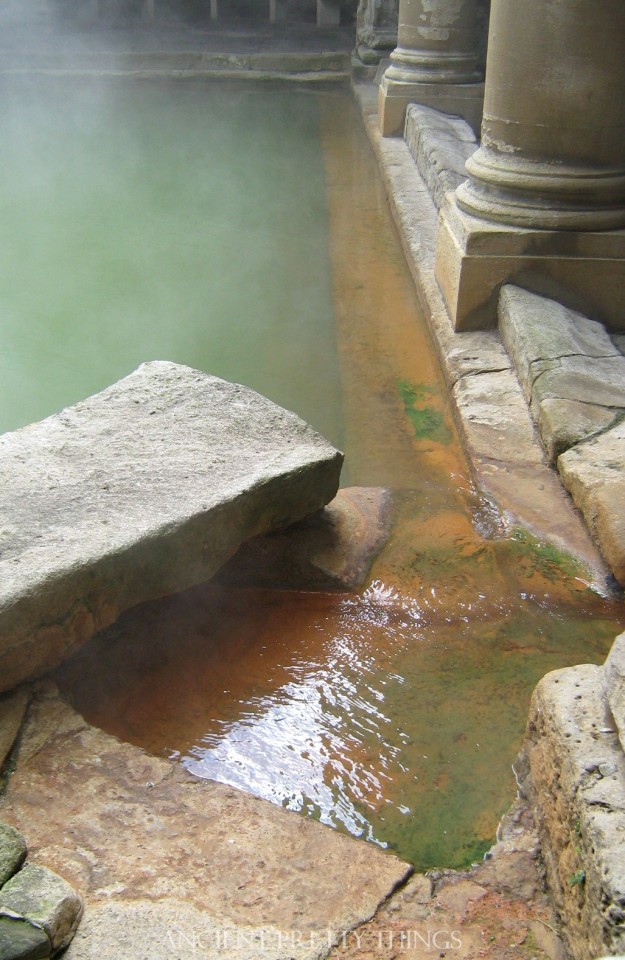
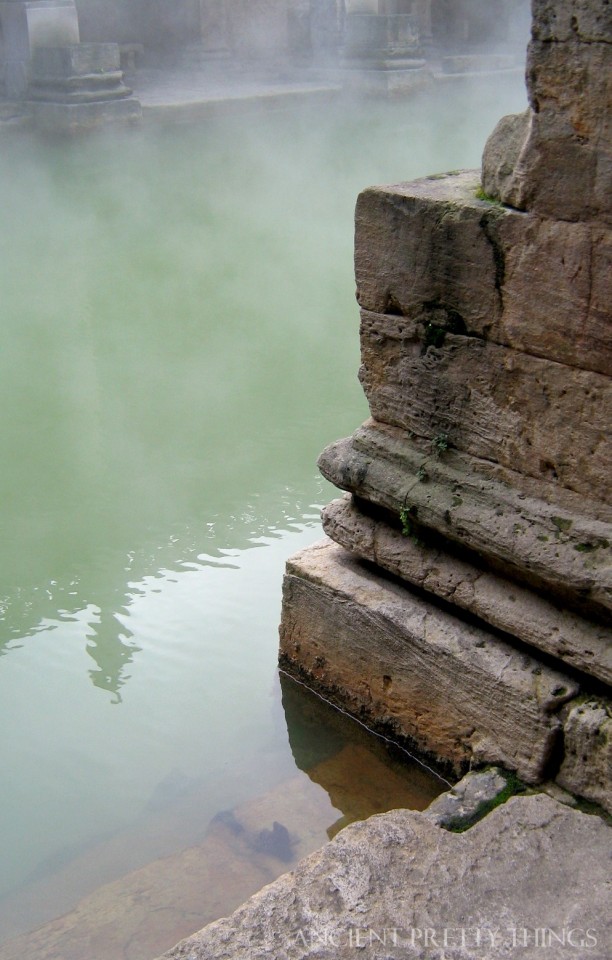

The Roman Baths, Bath.
England.
#bath#roman baths#romans baths bath#england#ancient rome#ancient roman#therme#mineral springs#original photography#ancientprettythings
3K notes
·
View notes
Text

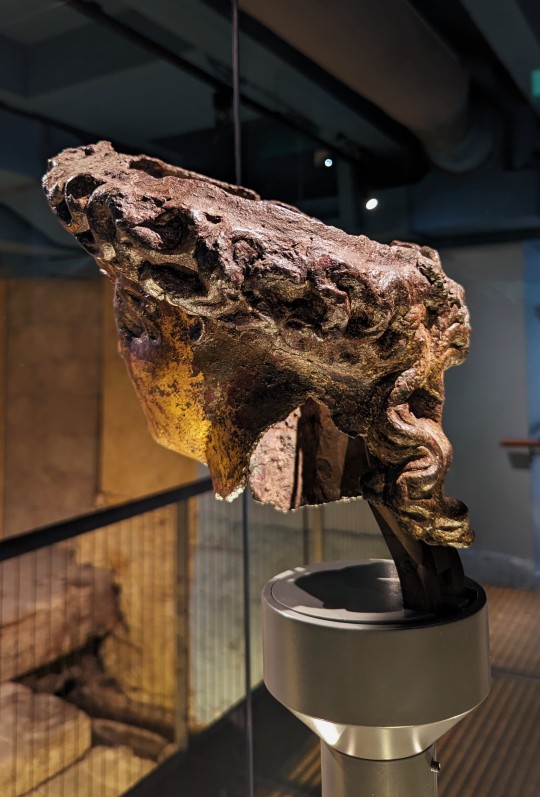
Bronze Head of Sulis Minerva from the Bath, England dated to the Late 1st Century on display at the Roman Baths Museum in Bath, England
This bronze head was discovered in 1727 and was an early indication that the Roman site at Bath was not a typical settlement. Gilt bronze sculptures are rare finds from Roman Britain as only two other fragments are known.
The head is probably from the cult statue of the goddess which would have stood within her Temple beside the Sacred Spring. From there she may have looked out across the Temple courtyard to the site of the great altar, the site of sacrifice, which stood at the heart of that sacred space. The statue may well be an original object from the foundation of the site in the later first century CE, which means that it was probably well over 300 years old when it met its demise.
The head is slightly larger than life size, suggesting that the original statue was an imposing sight. Hidden in the hair line are several small holes which once held rivets that fixed her tall Corinthian helmet to her head.
Examination of the head has revealed that it has six layers of gilding. The first two use a technique known as fire gilding whilst the four later layers are applied as gold leaf. The head has a number of imperfections. There is corrosion which has affected it in parts where it lay in the ground for over a thousand years. There is also a strange rectangular cut beneath the chin. It is thought that this may result from a flaw in the original casting process in which a bubble on the surface may have been cut out and filled with an inserted plate. When gilded over it would not have been visible. This plate has subsequently fallen out as a result of corrosion whilst in the ground.
Photographs taken by myself 2023
#art#archaeology#history#roman empire#english#england#ancient#iron age#roman baths museum#bath#barbucomedie
199 notes
·
View notes
Text
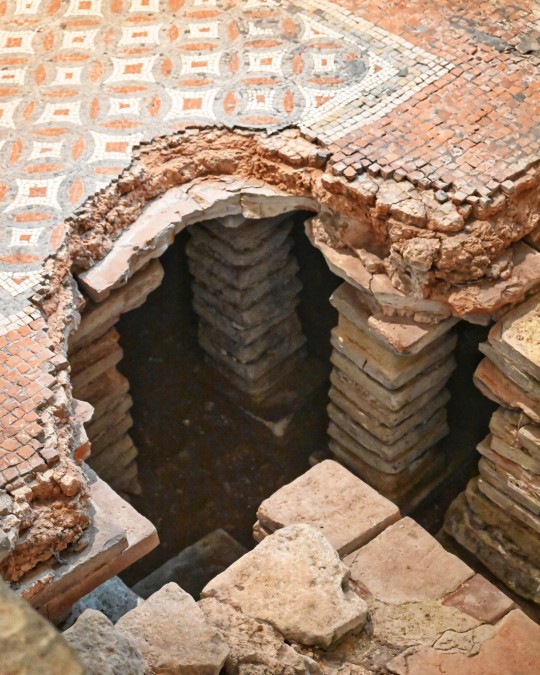
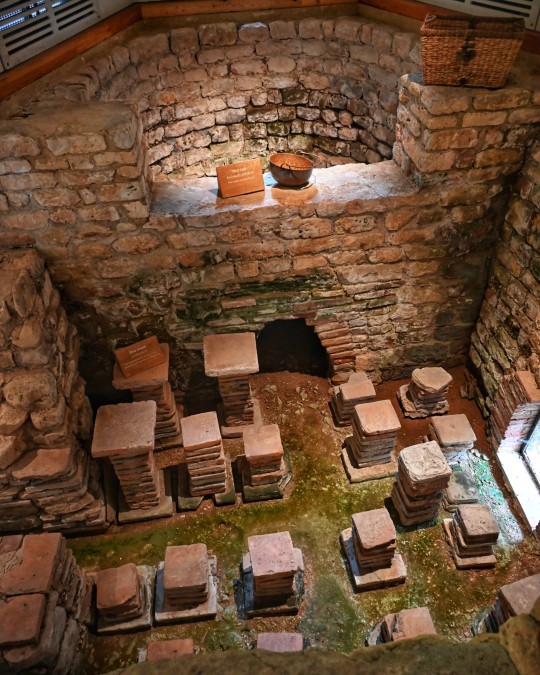

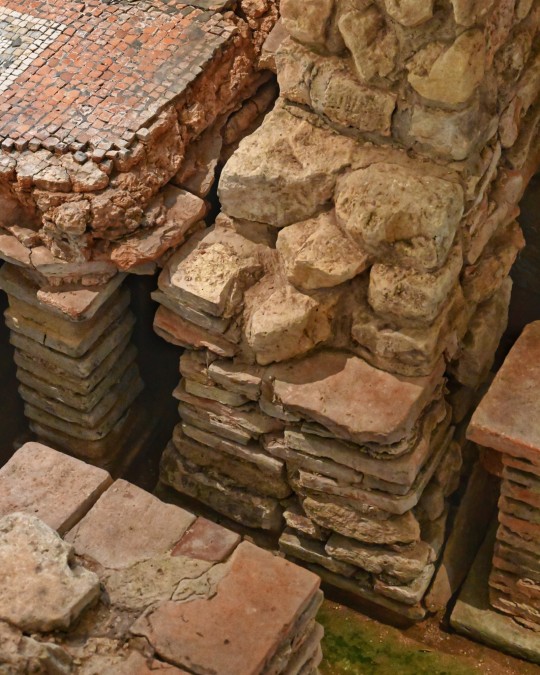



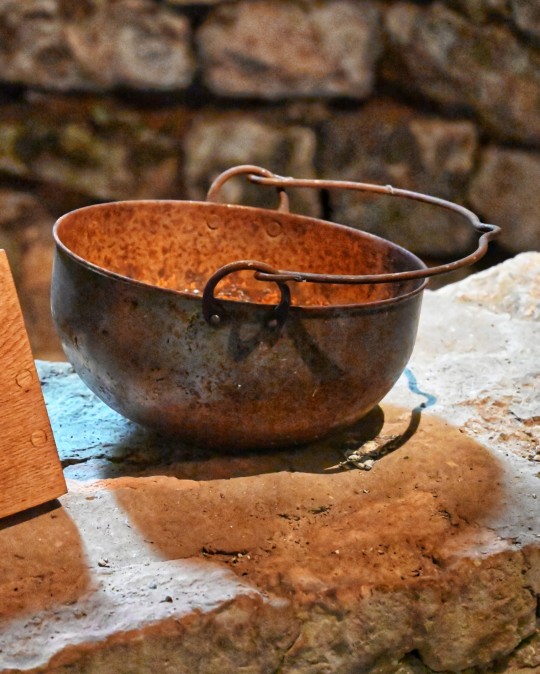

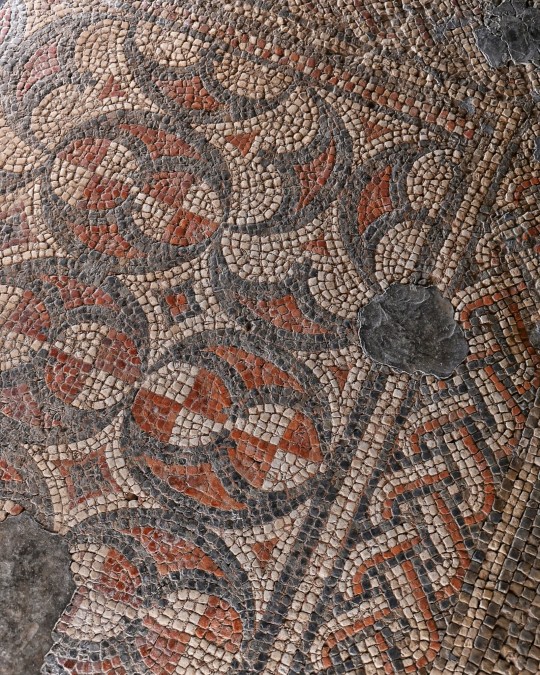
The baths at Chedworth Roman Villa, Gloucestershire.
#roman#roman baths#roman living#roman bathhouse#bathing#relic#mosaics#hypocaust#tiles#pottery#ancient living#ancient craft#Chedworth#roman britain#roman villa#archaeology
889 notes
·
View notes
Text

... mosaic ...
📷 Alison Fisk
Spectacular octopus mosaic from the floor of the women’s changing room at the Central Baths in ancient Herculaneum.
This magnificent Roman monochrome mosaic makes quite an impact.
#mosaic#octopus#herculaneum#history#art#archeology#central bath#roman history#ancient rome#blue#blue is beautiful
113 notes
·
View notes
Text

my favorite part of the Voynich Manuscript is this little nymph bathing in a pitcher plant and making a rainbow with the water spray
#i feel like that word could be rainbow who knows#i love the voynich manuscript its so fun to think about#i love the aqueducts or waterfall plumbing going on#my not real but funny theory is that this is tolkiens first attempt at cryptography#jkjk#its interesting because ancient greeks and romans had those public baths but they never had the layered waterfall pipes with draining basins#like built into the side of waterfalls#which is how i see it#i think the guy was trying to draw a top down view of some ladies bathing but he was really far away#you can see an inkling of perspective in somw of the pages not here but online of someone looking down at a waterfall from the top#in my. opinikn#the voynich manuscript
78 notes
·
View notes
Text

The Death of Seneca by Manuel Domínguez Sánchez
#seneca#death#art#manuel domínguez sánchez#ancient rome#seneca the younger#stoic#stoicism#roman#romans#classical antiquity#history#europe#european#antiquity#neoclassicism#neoclassical#rome#laurel wreath#bathtub#bath
110 notes
·
View notes
Photo


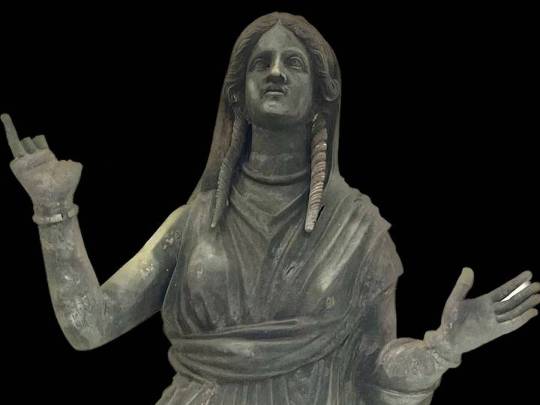
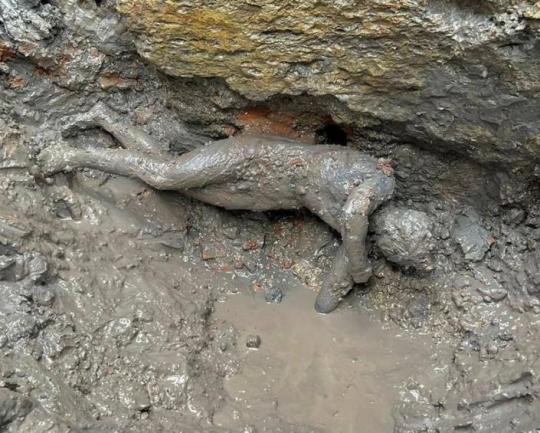


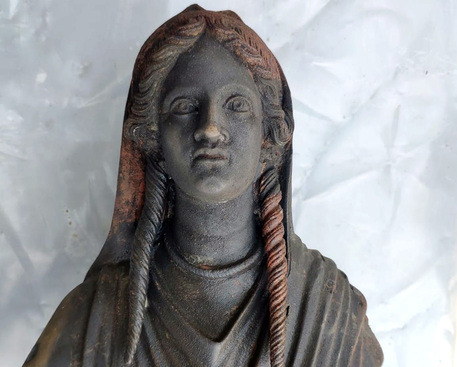
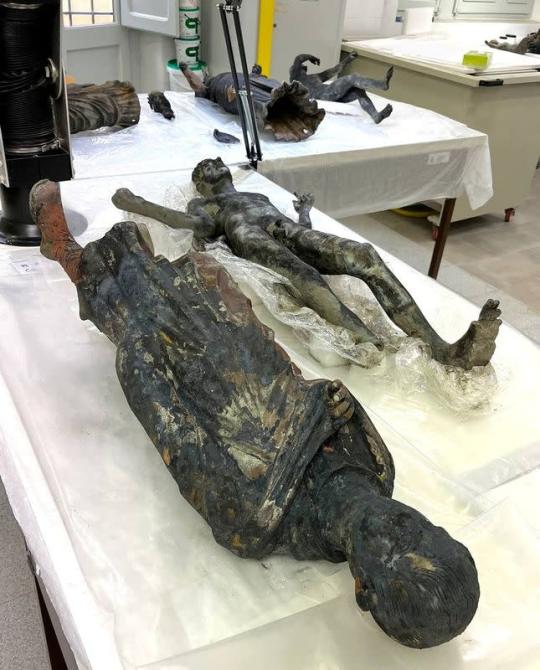

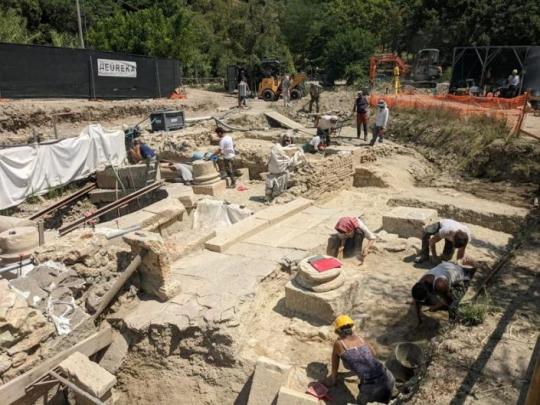

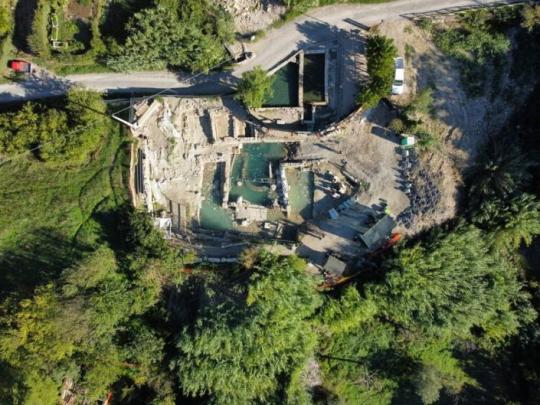
Italy Hails 'Exceptional' Discovery of Ancient Bronze Statues in Tuscany
Archaeologists in Italy have uncovered more than two dozen beautifully preserved bronze statues dating back to ancient Roman times in thermal baths in Tuscany, in what experts are hailing as a sensational find.
The statues were discovered in San Casciano dei Bagni, a hilltop town in the Siena province, about 160 kilometres (100 miles) north of Rome, where archaeologists have been exploring the muddy ruins of an ancient bathhouse since 2019.
"It is a very significant, exceptional finding," Jacopo Tabolli, an assistant professor from the University for Foreigners in Siena who coordinates the dig, said on Tuesday.
Massimo Osanna, a top culture ministry official, called it one of the most remarkable discoveries "in the history of the ancient Mediterranean" and the most important since the Riace Bronzes, a giant pair of ancient Greek warriors, were pulled from the sea off the toe of Italy in 1972.
Tabolli said the statues, depicting Hygieia, Apollo and other Greco-Roman divinities, used to adorn a sanctuary before they were immersed in thermal waters, in a sort of ritual, "probably around the 1st century AD".
"You give to the water because you hope that the water gives something back to you," he said of the ritual.
TIME OF CONFLICT
Most of the statues date to between the 2nd century BC and the 1st century AD, a period of "great transformation in ancient Tuscany" as it switched from Etruscan to Roman rule, the Culture Ministry said in a statement.
It was an "era of great conflicts" and "cultural osmosis", in which the Great Bath sanctuary of San Casciano represented a "unique multicultural and multilingual haven of peace, surrounded by political instability and war," the ministry said.
The statues were covered by almost 6,000 bronze, silver and gold coins, and San Casciano's hot muddy waters helped to preserve them "almost like as on the day they were immersed," Tabolli said.
The archaeologist said his team had recovered 24 large statues, plus several smaller statuettes, and noted that it was unusual for them to be made out of bronze, rather than terracotta.
Tabolli said this suggested they came from what he called an elite settlement, where archaeologists also found "wonderful inscriptions in Etruscan and Latin", mentioning the names of powerful local families, the ministry statement added.
According to Culture Minister Gennaro Sangiuliano, the "exceptional discovery ... confirms once again that Italy is a country of immense and unique treasures".
The ministry said the statues have been taken to a restoration laboratory in nearby Grosseto, but will eventually be put on display in a new museum in San Casciano.
#Italy Hails 'Exceptional' Discovery of Ancient Bronze Statues in Tuscany#bronze#roman bronze statues#ancient artifacts#archeology#archeolgst#history#history news#ancient history#ancient culture#ancient civilizations#ancient tuscany#ancient bath house#roman history#roman empire
1K notes
·
View notes
Text
The Ea-Nasir meme reminds me of how in Bath, England, there's the famous Roman Baths. If you ever visit, they have displays of all these prayer tablets that were found in the spring of the goddess Sulis Minerva, where people tossed them into the waters to ask for aid.
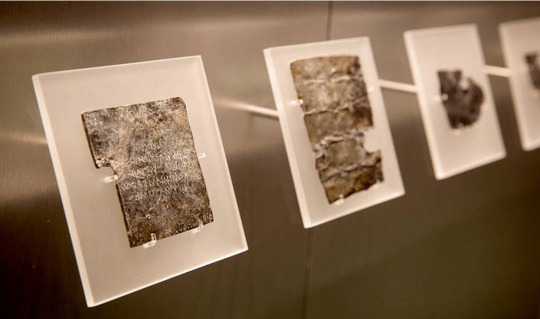
And like, 90% of the ones I remember being on display went something like:
"Someone stole my cloak while I was bathing and I would like you to punish them with blood and plague unless it is returned by Thursday"
"Please place a curse upon Bob, who took my gloves while I was bathing, thank you"
"I lost six silver coins in the baths and it was definitely stolen by either Steve or Joe or Peter, please bring your divine wrath upon the head of either Steve or Joe or Peter for this terrible deed"
Because people have always been people, and we have always needed a way to complain about the petty daily bullshit we have to put up with
(You can read more of them here on Wikipedia)
437 notes
·
View notes
Text
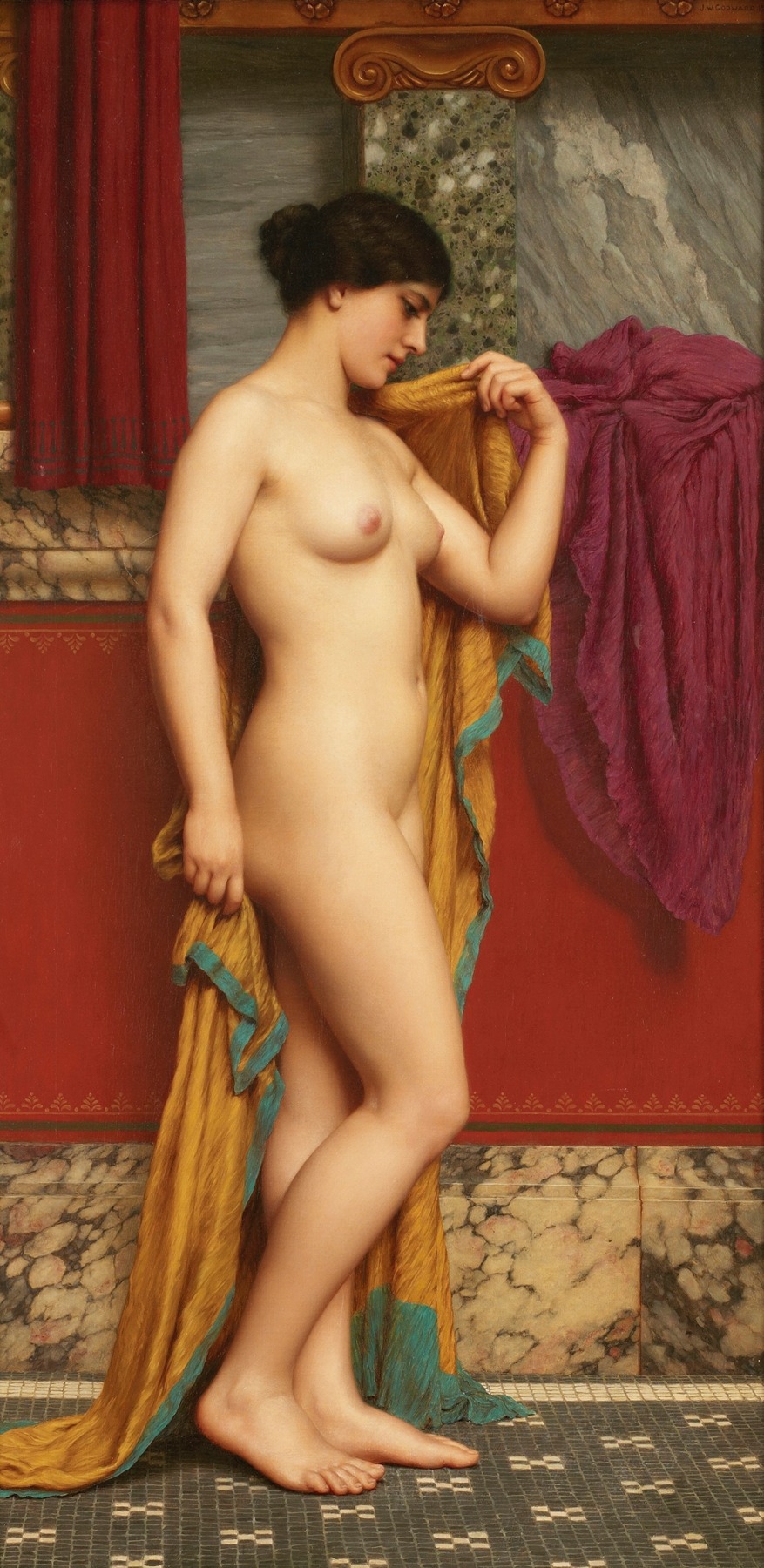
In the Tepidarium by John William Godward (1913)
#john william godward#art#paintings#fine art#1910s#1910s art#neoclassical#neoclassicism#neoclassical art#painting#british art#british artist#roman#ancient rome#roman baths#classic art
4K notes
·
View notes
Text

Baths of Neptune, Ostia Antica
* 2nd-4th century CE
Ostia Antica, July 2015
46 notes
·
View notes
Text
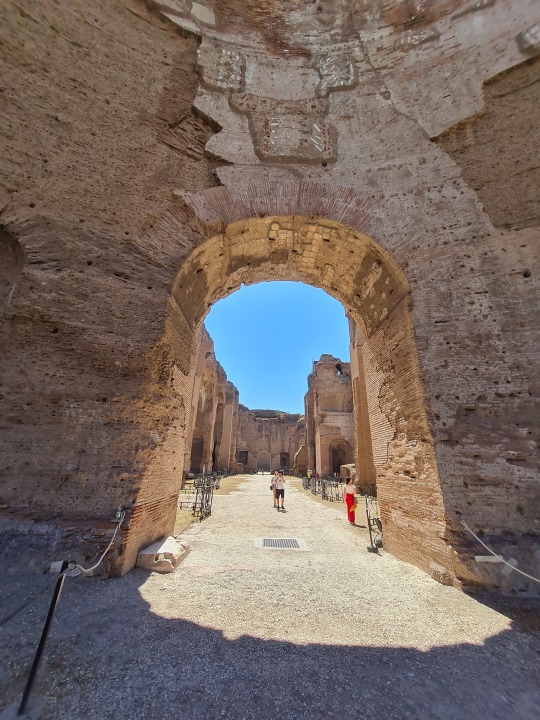


The Baths of Caracalla in Rome, Italy
The thermae were probably constructed during the reigns of the emperors Septimius Severus and his son Caracalla. This was between 211 and 216/217 AD.
#baths of caracalla#ancient rome#roman history#ancient history#ancientmonuments#archaeology#roman empire#caracalla#roman emperor#bath house#roman architecture#rome#roma#italia#italy#rome italy#travel#traveling#travel photography#history#culture#architecture#mosaic#roman mosaic#travel blog#wanderlust#explore#road trip#lazio#original photography
364 notes
·
View notes
Text


The ruins of the Large Baths, part of the extensive Villa of Hadrian.
Tivoli
Dec. 2019
#italia#italy#bath#roman baths#original photography#photography#travel#tivoli#hadrians villa#architecture#historical architecture#photographers on tumblr#roman architecture#roman archaeology#lensblr#ancient rome#ancient roman#wanderingjana
14 notes
·
View notes
Text
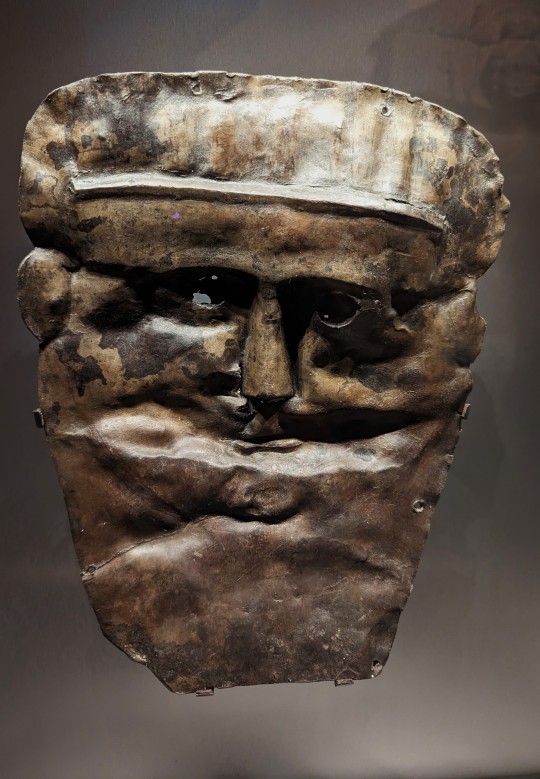
Religious Mask from Bath, England dated between the 1st and 4th Centuries on display at the Roman Baths Museum in Bath, England
Photographs taken by myself 2023
#art#archaeology#history#fashion#roman empire#england#english#ancient#iron age#roman baths museum#bath#barbucomedie
119 notes
·
View notes